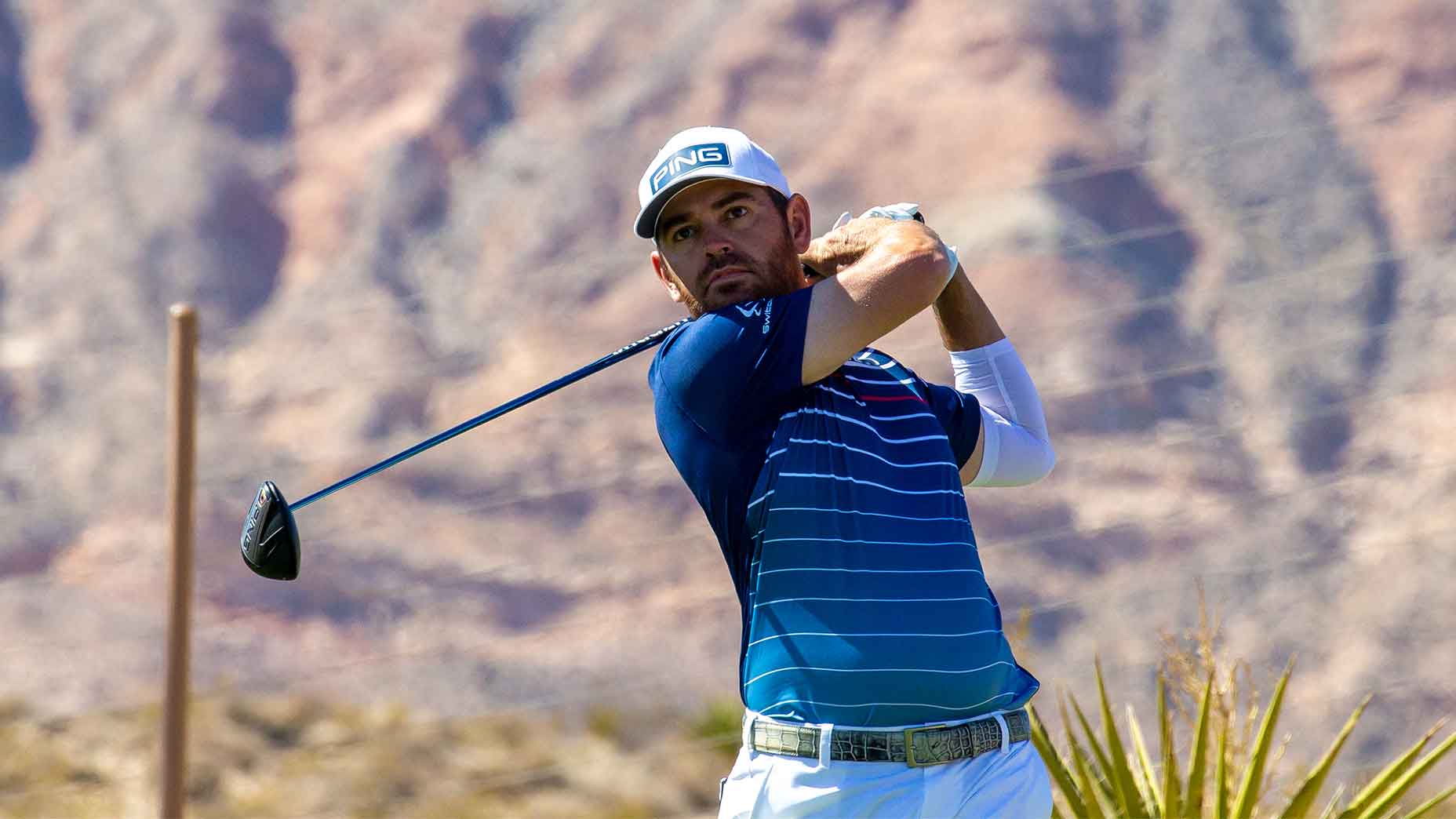Some of the very best golf teachers on the planet are at Pinehurst Resort this week for GOLF’s Top 100 Teachers Summit. You can access all of their insight by signing up for the livestream. But lucky you, we’ll also break down some of what you missed right here. (For more on the Top 100 Teachers Summit, click here.)
It was easy enough to discern that something was very, very off with Louis Oosthuizen. Slightly harder was figuring out what that thing was. For months, the former major winner had dealt with a maddening stretch of inconsistency, and yet nobody was quite sure why.
After diving into the data, Oosthuizen’s coach, Justin Parsons, and physiotherapist, Marnus Marais, noticed a concerning trend. In the morning, the 39-year-old’s scores were nearly a full stroke better than in the afternoon. Sure, some of that could be due to course conditions, which are generally easier in the morning than in the afternoon, but the data set was large enough to suggest there was something else at play. Even more concerning: the data seemed to suggest that the closer to contention Oosthuizen was on the weekend, the worse he’d perform — with a particular weakness appearing on the back nine.
“On the back nine, there’s a change,” Marais said at GOLF’s Top 100 Teachers Summit Monday. “There’s a change in focus and a change in shot execution. It just doesn’t make sense what’s happening in the middle of the back nine versus the end of the back nine.”
Parsons and Marais soon began theorizing how the time of day was affecting Oosthuizen’s game so significantly. Soon, Marais and Parsons remembered one of their client’s most particular idiosyncrasies: his diet.
“I noticed that Louis was a shot worse from an A.M. point to a P.M. point,” Parsons said. “He doesn’t like to eat. He’s never liked to eat during the course of play. So for a morning round, he has breakfast, and then he’s ready to play and pretty much fueled for the day. In the afternoon, he has breakfast, and then he normally starts warming up around midday or whatever. So we just saw this big decline and this big dump whenever he plays, so I said to Marnus, we’ve got to do something about this.”
Marais began researching the best course of action for Oosthuizen, who was steadfast in his reproach for mid-round snacking, and stumbled upon a unique solution.
“After working with Louis, I know he doesn’t like to eat. We always try to meet players where they are. So trying to convince Louis that he had to eat a PB&J or a turkey sandwich or whatever on the course is not a battle I am willing to take on,” Marais said. “So I just suggested, let’s just try this amino acid drink, which we can easily mix in with his hydration.”
As Marais explained, an amino acid drink would provide many of the same energy-boosting benefits of consuming food on the golf course without, y’know, actually consuming food.
“So I explained to him what was happening and I explained to him what could be the reasoning for his inconsistency down the back nine. I explained to him that the amino acids are a protein broken down and they’re easily assimilated by the body. And let’s just try this, let’s just take this drink at the turn and see what happens.”
Oosthuizen was initially hesitant, but eventually relented. Almost immediately, the results were obvious: in 2021, Oosthuizen had one of the best (and most consistent) seasons of his professional career.
“It made a significant difference, I think,” Marais said. “Everybody on his team, we all saw significant improvement from him taking that.”
